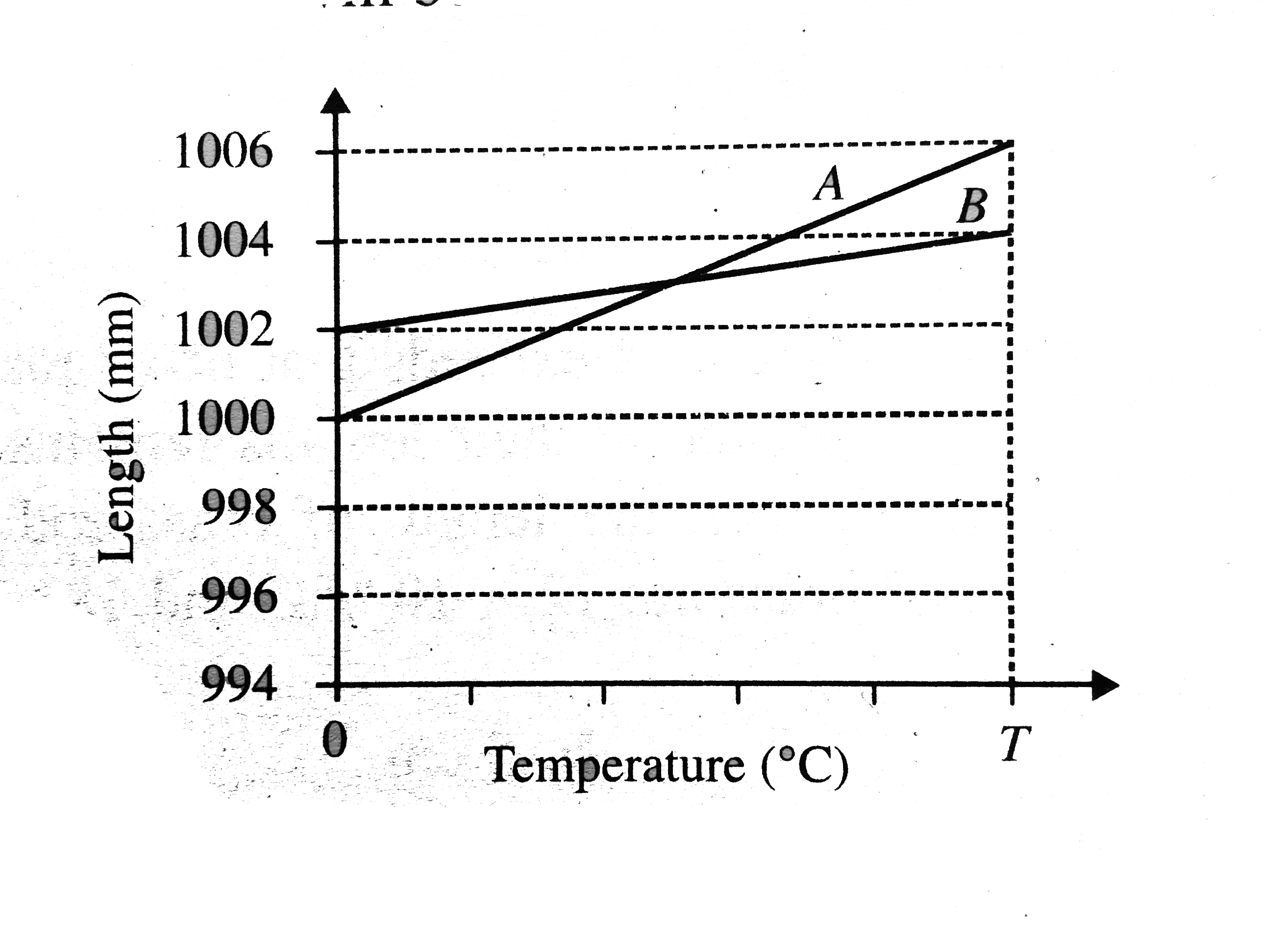A metallic rod l cm long, A square cm in cross-section is heated through t∘C. If Young’s modulus of elasticity of the metal is E and the mean coefficient of linear expansion is α per degree celsius, then the compressional force required to prevent the rod from expanding along its length is
YAαt
Yaαt1−αt
Yaαt1+αt
YA(1+αt)α
The correct Answer is:A
To solve the problem step by step, we will follow the principles of thermal expansion and Young's modulus.
Step 1: Understand the Problem
We have a metallic rod of length L cm and cross-sectional area A cm². The rod is heated to t °C. We need to find the compressional force required to prevent the rod from expanding due to heating.
Step 2: Calculate the Change in Length
When the rod is heated, it will expand. The change in length (ΔL) due to thermal expansion can be calculated using the formula:
ΔL=α⋅L⋅ΔT
where ΔT=t °C (the change in temperature).
Thus, we can express the new length L′ as:
L′=L+ΔL=L+α⋅L⋅t
Step 3: Determine the Strain
Strain (ϵ) is defined as the change in length divided by the original length:
ϵ=ΔLL=α⋅L⋅tL=α⋅t
Step 4: Calculate the Stress
Stress (σ) is defined as the force (F) applied per unit area (A):
σ=FA
Step 5: Relate Stress and Strain using Young's Modulus
Young's modulus (E) relates stress and strain:
E=σϵ
Substituting the expressions for stress and strain, we have:
E=F/Aα⋅t
Step 6: Solve for the Force
Rearranging the equation to solve for the force F:
F=E⋅A⋅α⋅t
Final Answer
Thus, the compressional force required to prevent the rod from expanding is:
F=E⋅A⋅α⋅t
We have a metallic rod of length L cm and cross-sectional area A cm². The rod is heated to t °C. We need to find the compressional force required to prevent the rod from expanding due to heating.
When the rod is heated, it will expand. The change in length (ΔL) due to thermal expansion can be calculated using the formula:
ΔL=α⋅L⋅ΔT
where ΔT=t °C (the change in temperature).
L′=L+ΔL=L+α⋅L⋅t
Strain (ϵ) is defined as the change in length divided by the original length:
ϵ=ΔLL=α⋅L⋅tL=α⋅t
Stress (σ) is defined as the force (F) applied per unit area (A):
σ=FA
Young's modulus (E) relates stress and strain:
E=σϵ
Substituting the expressions for stress and strain, we have:
E=F/Aα⋅t
Rearranging the equation to solve for the force F:
F=E⋅A⋅α⋅t
Thus, the compressional force required to prevent the rod from expanding is:
F=E⋅A⋅α⋅t
Similar Questions
Calculate the compressional force required to prevent the metallic rod of length l cm and cross sectional area Acm2 when heated through t∘C from expanding lengthwise. Young's modulus of elasticity of the metal is E and mean coefficient of linear expansion is α per degree celsius.
View SolutionCalculate the compressional force required to prevent the metallic rod length lcm and cross-sectional area Acm2 when heated through t∘C, from expanding along length wise. The Young's modulus of elasticity of the metal is E and mean coefficient of linear expansion is α per degree Celsius
View SolutionA metallic wire of length l is held between two rigid supports. If the wire is cooled through a temperature t. (Y= Young's modulus of elasticity of wire, ρ= density, α= thermal coefficient of linear expansion). Then the frequency of oscillation is proportional to
View SolutionA metal rod of length 'L' and cross-sectional area 'A' is heated through 'T'∘C What is the force required to prevent the expansion of the rod lengthwise ?
View SolutionA metal rod has length L, radius of its cross-section r. Youngs modulus Y and thermal coefficient of linear expansion is α.It is clamped between two rigid supports with negligible tension. If its temperature is increased by T∘C, then force exerted by the rod on any of the supports is
View SolutionA metal rod of length l, cross-sectional area A, Young's modulus Y and coefficient of linear expansion α is heated to t∘C. The work that can be performed by the rod when heated is
View SolutionOn heating the metal rod of length 2m from 0°C to 50°C, its length is increased by 0.1 cm. the coeffecient of linear expansion of metal rod is
View SolutionTwo metal rods of the same length and area of cross-section are fixed end to end between rigid supports. The materials of the rods have Young moduli Y1 and Y2 , and coefficient of linear expansion α1 and α2 . The junction between the rod does not shift and the rods are cooled
View SolutionConsider three rods of length L1,L2andL3 espectively joined in series. Each has same cross - sectional area with Young's moduli Y, 2Y and 3Y respectively and thermal coefficients of linear expansion α,2αand3α respectively. They are placed between two rigid fixed walls. The temperature of the whole system is increased and it is found that length of the middle rod does not change with temperature rise. Find the value of 9L1L3.
View Solution
The variation of length of two metal rods A and B with change in temperature is shown in Fig. the coefficient of linear expansion αA for the metal A and the temperature T will be? ( alpha_(A)=3x10^(-6)/ C )
View Solution
